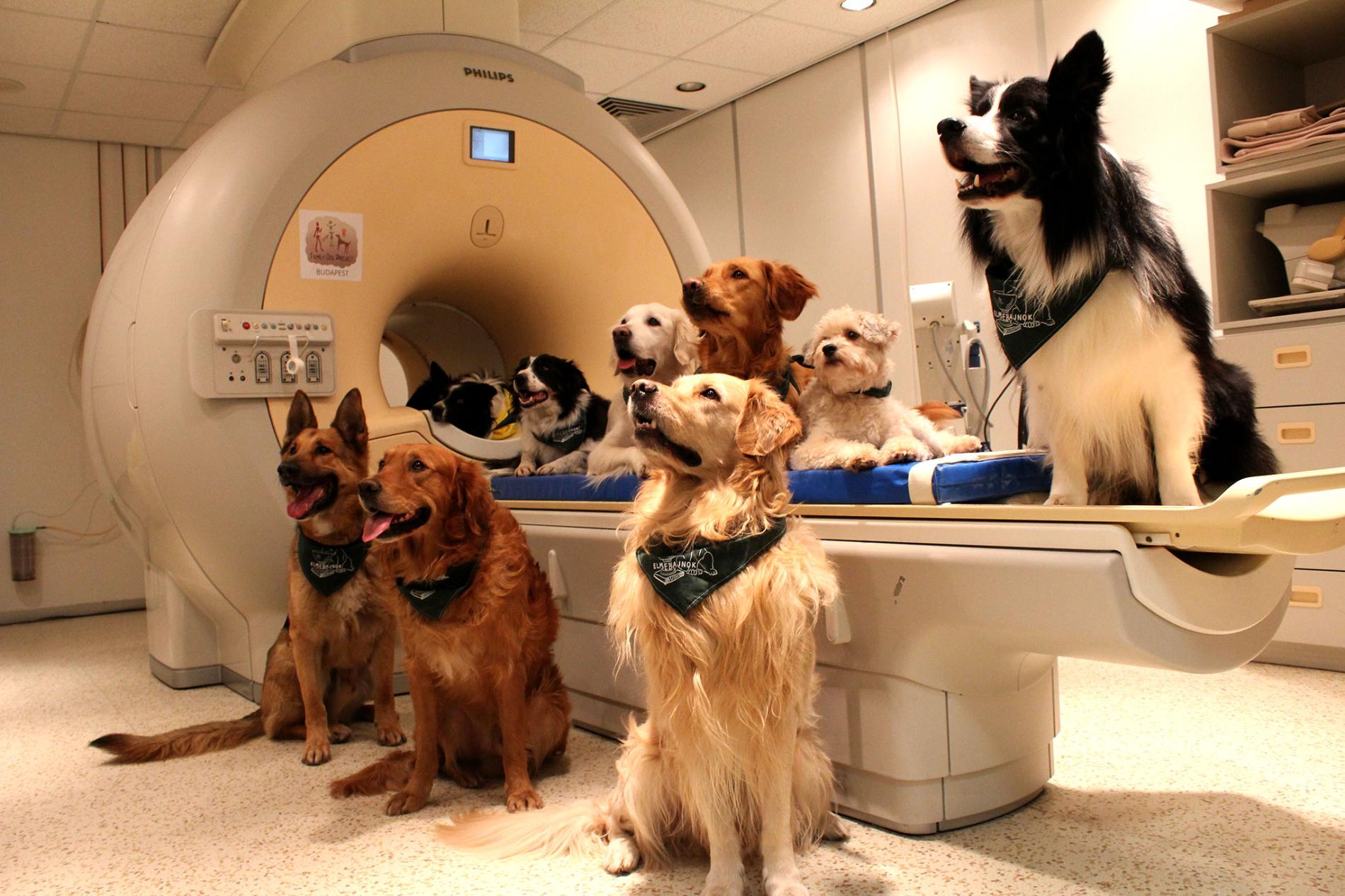Humans and Dogs Share Similar Brain Traits

How closely do you process an emotional situation compared to your Cockapoo? Does your Pug become as alarmed when it hears a whining child as you do? A new study is suggesting the answer is yes and the processing is done in much the same way.
The average dog can learn approximately 100 words, but does not have the capacity to understand language and its complexity the way a human does. However, new research has found that dog and human brains process the vocalizations and emotions of others in a similar fashion, suggesting that dogs use the sounds we make to assess our emotions.
Researcher Attila Andics and his team from MTA-ELTE Comparative Ethology Research Group in Hungary devised an experiment to compare human and dog brains via MRI scans. They trained 11 dogs to lie without moving when put into an fMRI brain scanner and had the dogs listen to almost two hundred dog and human sounds including whining, crying, laughing, and happy barking. Then a group of humans underwent MRIs listening to the same sounds. The team then analyzed the results.
According to the research, which was published in Current Biology, the dogs’ brains have voice-sensitive regions that resemble those of humans and are in similar areas of their respective brains. These areas process voices and emotions of other individuals similarly. Both the human and dog groups displayed greater neural activity when listening to vocalizations of positive emotions such as laughing or playful barking than to negative sounds like crying or whimpering.
The test subjects also responded more strongly to sounds made by their own species reports Andics. “Dogs and humans meet in a very similar social environment but we didn’t know before just how similar the brain mechanisms are to process this social information.”
Physiologically speaking, researchers suspect these voice-sensitive brain regions may have evolved as much as 100 million years ago in the last common ancestor of humans and dogs. Andics’ research suggests other mammals that also arose from that same evolutionary branch as humans and canines are likely share the same brain areas as well.
Andics believes the parallel brain sensitivity to voices and emotions may explain in part the unique bond between humans and dogs, which goes back as far as 30,000 years ago. “This similarity helps explain what makes vocal communication between dogs and humans so successful. It’s why dogs can tune into their owners’ feelings so well.”
For those of us who own dogs, the idea that they can sense emotions is hardly a surprise. Whether we are talking about a small dog such as a Chihuahua or a large dog such as an Irish Wolfhound, it is obviously dogs are highly reactive to emotional stimuli. Start crying and your dog will often climb up in your lap in an effort to comfort you. Laugh hysterically and your dog often jumps up and starts wagging their tale.
Hey, maybe we should have conducted the study!
